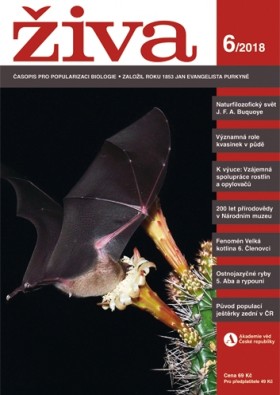Jirka has recently written a popularizing paper on the largest beetle in the world, Titanus giganteus, for the Vesmír journal. Jirka has been studying titans in French Guyana since 2016 already, every year they are mainly radio tracking its adults. Titans are still quite enigmatic insects (even its larva is unknown, although expected to grow up to 30 cm!), Jirka is one of the best persons to review all available information on the beautiful beetle. The article can be downloaded here, in Czech, but full of nice pictures.
Popularizing paper on the largest beetle
Back from the Kruger NP
S ylvain and Rob have again visited South African Kruger National Park to study dynamics of biodiversity in savanna. This time, they have spent three more weeks by sampling of moths and recording of bats. At the same time, birds were censused by our colleagues David Storch and Ondrej Sedlacek. The moth abundances several times exceeded the previously sampled end of dry season in November, so we expect a lot of very interesting findings!
ylvain and Rob have again visited South African Kruger National Park to study dynamics of biodiversity in savanna. This time, they have spent three more weeks by sampling of moths and recording of bats. At the same time, birds were censused by our colleagues David Storch and Ondrej Sedlacek. The moth abundances several times exceeded the previously sampled end of dry season in November, so we expect a lot of very interesting findings!
Lectures on biodiversity of postindustrial sites
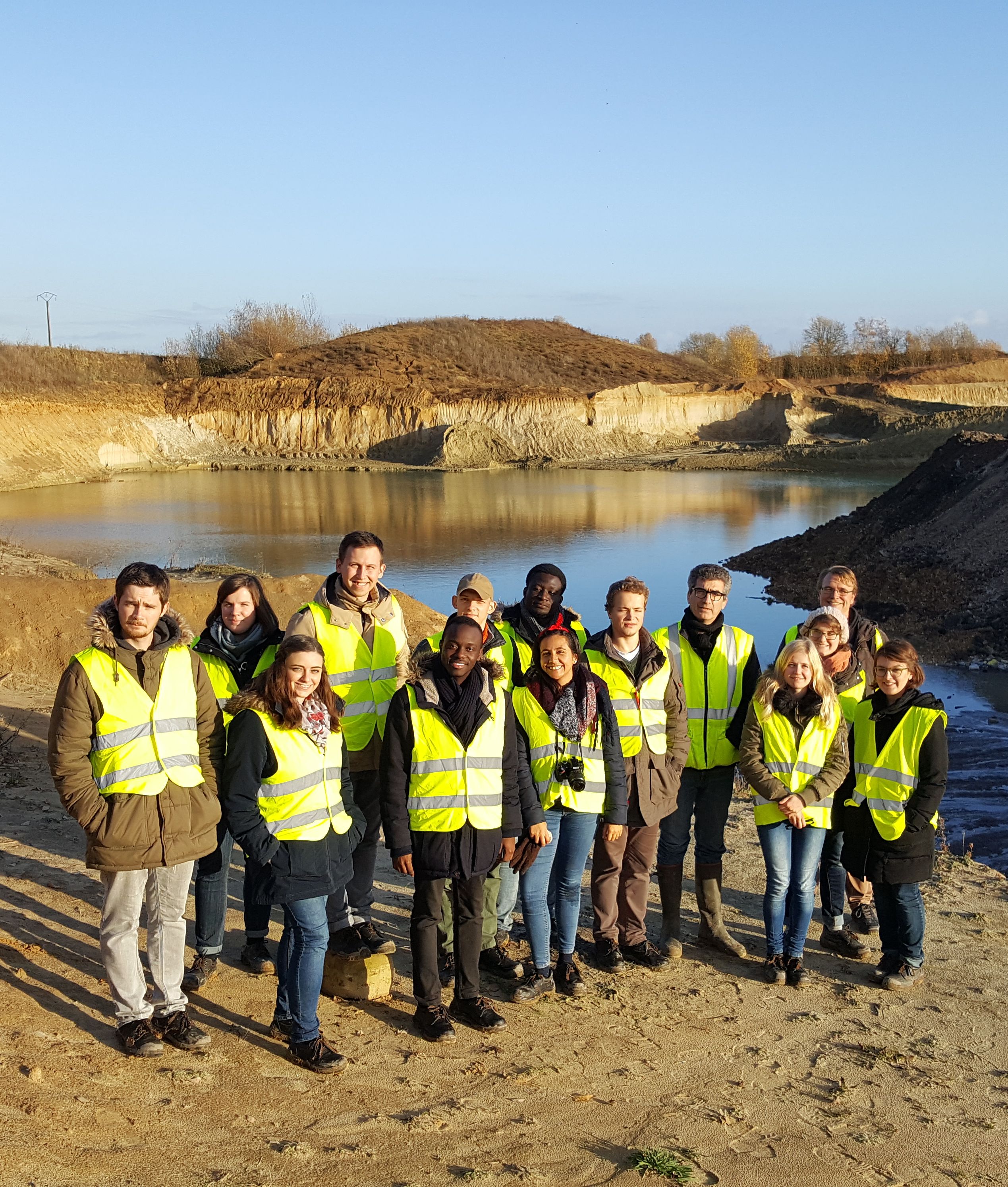
Students of ISA Lilla (and Rob) at the excursion to a sand mine. © J. Castelin
During the past month, Rob gave several lectures on our research of biodiversity and restoration of postindustrial sites. At the end of November, Rob has visited ISA Lille where he taught the topic for two days, followed by an excursion into two sites under restoration after mining. This was already a third year complex lecture for the international students, combining mutual visits of France and Czechia. This year seems to be highly successful, as one ISA Lille will probably spent her six months internship in our group. In mid-December, Rob gave two lectures, one for Czech and one for international students, at the Czech University of Life Sciences in Prague-Suchdol. Rob is giving these lectures regularly, as the CULS students are potentially ending up in practical conservation. Lastly, a week before Christmas, Rob gave a specialised talk on biodiversity and restoration of fly ash deposits for the new lecture series on degraded sites restoration at the Faculty of Science, Charles University, led by Prof. Pavel Kovář. Hopefully, all these talks and lectures will lead to more intensive application of ecological restoration practice in many projects in various postindustrial sites, as well as improvement of communication within our scientific field.
Popularising articles on our work
Recently, Rob co-authored three popularising papers related to our research topics. In the last issue of Živa, a popularising journal of the Czech Academy of Sciences, there are two papers written together with Jana Jersáková. The main paper focuses on mutual relationships of flowering plants and their pollinators, including its evolution. The second paper describes and discusses pollination syndromes. A week ago, a brief description of the projects on dynamics of biodiversity in the Kruger National Park in relation to water stress and herbivores was published in Botanika, a popularising journal of the Institute of Botany CAS. All three papers are freely accessible, click the links above. Although in Czech, there are some nice pictures.
New paper on seasonality of rainforest butterflies and moths
Tropical ecosystems are often considered as highly stable environments with negligible seasonality. The opposite is true and many tropical biomes, including lowland rainforests, are strongly seasonal in both environmental conditions and dynamics of communities. This is evidenced also by our newest paper published in the Ecology and Evolution journal just two days ago. Based on our very intensive sampling of butterflies and moths in rainforests of the lower elevations of Mount Cameroon, we are showing the dynamics of their communities in relation to the local seasonal changes of dry and rainy periods. Although we are not covering the high wet season (the monthly precipitation exceeds 2 metres during that period), there is a strong seasonal turnover of community composition. Simultaneously, we are showing the dynamics of species richness: in most groups, species richness drops during rains and then rises towards the high dry season. Subsequently, diversity of some groups continues to increase towards the rain season beginning, whilst others reach their richness peak in the high dry season. Congratulations to Vincent’s first first-authored “big ecological paper”! Now, he is analysing how this seasonal dynamics influence elevational diversity patterns.
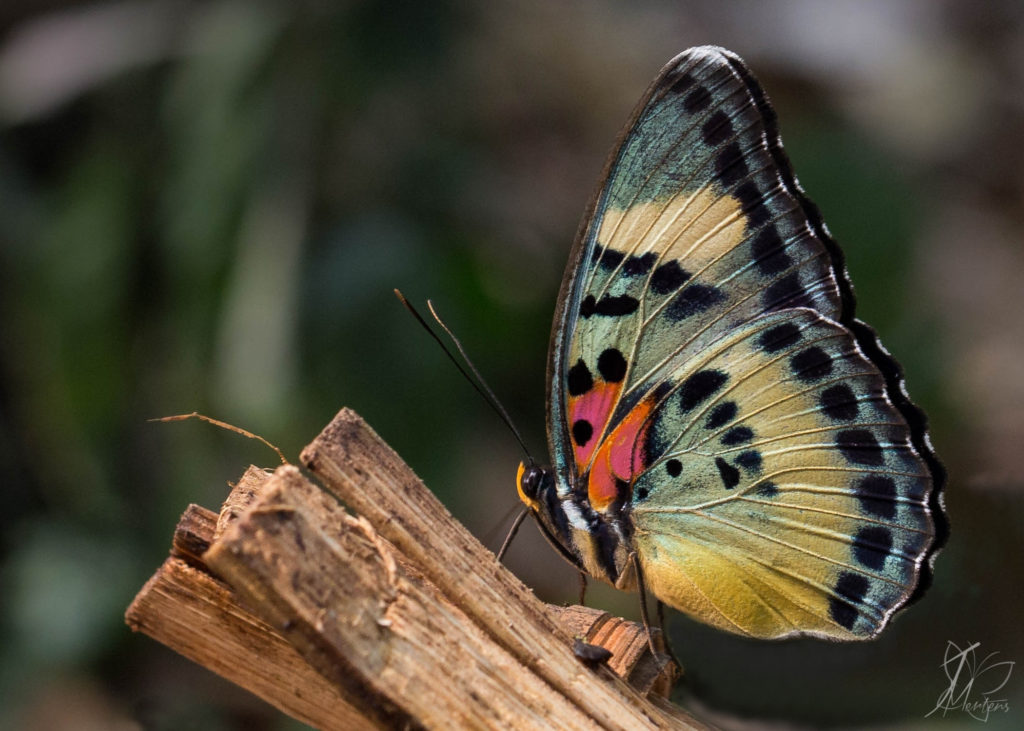
Euphaedra permixtum, a common fruit-feeding butterfly in the foothills of Mount Cameroon. © Jan Mertens
Full citation: Maicher V., Sáfián S., Murkwe M., Przybyłowicz Ł., Janeček Š., Fokam E.B., Pyrcz, T. & Tropek R. (2018) Flying between raindrops: Strong seasonal turnover of several Lepidoptera groups in lowland rainforests of Mount Cameroon. Ecology & Evolution. https://doi.org/10.1002/ece3.
Sampling of moths (and bats) in Kruger
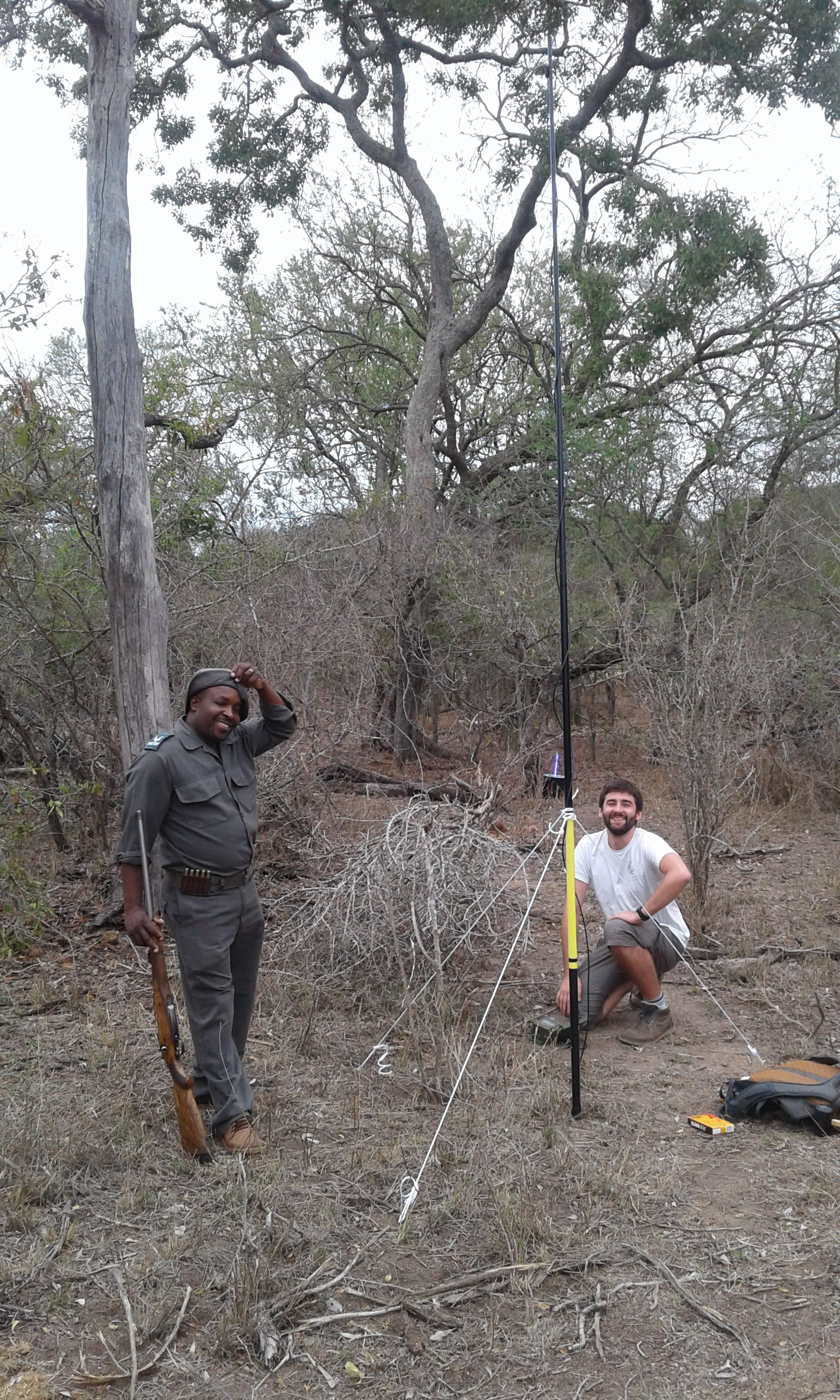
Sylvain, together with our guard Annoit, installing a bat recorder, a moth trap is in behind. ©R. Tropek
Sylvain and Rob have spent a bit over two weeks in the Kruger National Park, South Africa, they are coming back tomorrow. They have been sampling moths and recording bats for the larger project of Petr Pysek and David Storch focused on the role of seasonal rivers for dynamics of biodiversity in African savannas. Despite some initial difficulties caused by delivery delays of our equipment, the sampling was successful and they are bringing back moths and data from 30 plots in the southern part of the park. This material will be processed in the coming months, whilst Rob and Sylvain are already arranging the next sampling in February/March 2019.
Rob’s talk in Bonn
On Monday, Rob gave an invited talk at the Biological Colloquium of the Institute of Zoology, University of Bonn, Germany. He summarised our results of analysing almost 50 thousands butterflies and moths recorded during our sampling along the altitudinal gradient of Mount Cameroon between 2014 and 2017. Vincent and Sylvain, the two PhD students currently responsible for the analyses, helped with the talk preparation crucially. Altogether, it was for the first time we put all the data and results together into some concise synthesis. Simultaneously, Rob met our friend and collaborator Marianne Espeland from the Zoological Research Museum Alexander Koenig, and together discussed progress on various projects.

Beautiful building of the University of Bonn where Rob gave his talk.
The pilot transplant experiment successfully finished
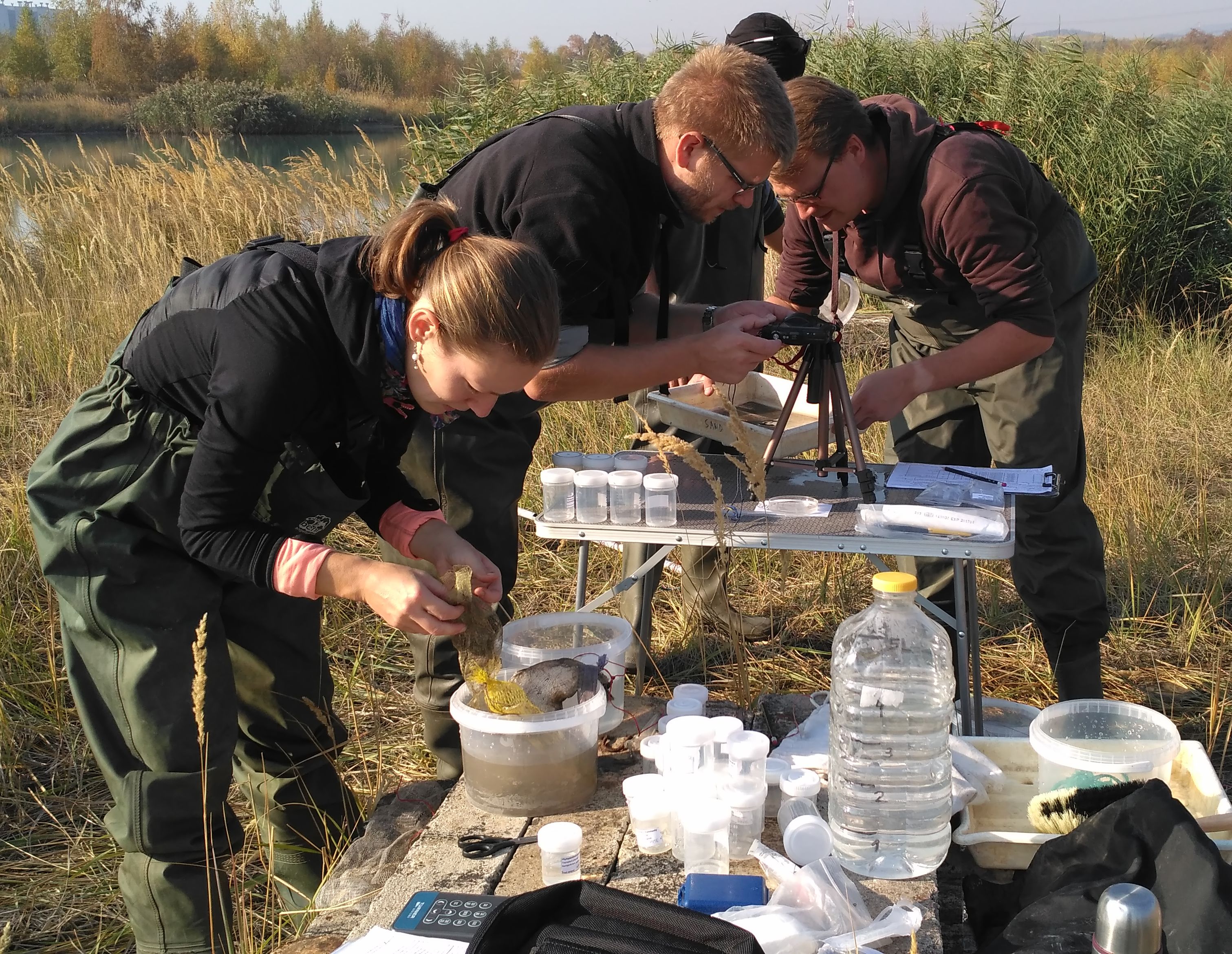
Processing of transplaned organisms at Prunéřov fly ash lagoon. ©A. Landeira-Dabarca
Recently, we have finished the pilot experiment of transplant of zygopteran larvae and algae communities between a fly ash deposit and a sandpit. We were lucky to collect all cages during one of the last warm and sunny days of this autumn. All cages seemed alright, as well as their inhabitants. Although Andrea is still preparing the preliminary results, it seems we will be able to perform the full experiment next year!
Scandinavian Association for Pollination Ecology Conference
Robert, Yannick and Stepan (together with our close collaborators Petra Janečková, Jana Jersáková and Michael Bartoš) attended the 32nd Annual Meeting of the Scandinavian Association of Pollination Ecologists (SCAPE) held from Thursday 18 – Sunday 21 October 2018, in the beautiful Avon Ri Lakeshore Resort, Wicklow, Ireland. We have presented our fresh dataset from the upper elevations of Mount Cameroon: Rob introduced pollination networks, while Yannick focused on the role of floral traits in the interactions of plants and pollinators. The whole meeting had a very nice and friendly atmosphere and we are really glad to get into the international pollination community. We really enjoyed the conference with a lot of interesting talks, discussions, Irish beer and even Irish dancing.
Group meeting in the Ruda field station
During the last weekend, our group met in the Ruda field station. We welcomed several newcomers to our group (three new PhD students, one intern, check our Team page), the retreat programme was thus clear: to introduce each other and to socialise. In both, we succeeded! Each present group member presented her/his work, either previous or current. Simultaneously, Stepan introduced building of our new station in Buea, Cameroon. We also split for two trips: first part (mainly foreigners) visited fish harvest in the Rozmberk pond, the rest of us did the “traditional” hike to Vlkov village. Last but not least, we succeeded to finish a beer barrel, as well as a beer crate donated by Vincent by the lost bet. Altogether, the group retreat was successful and enjoyable and we are already looking forward to the next one!
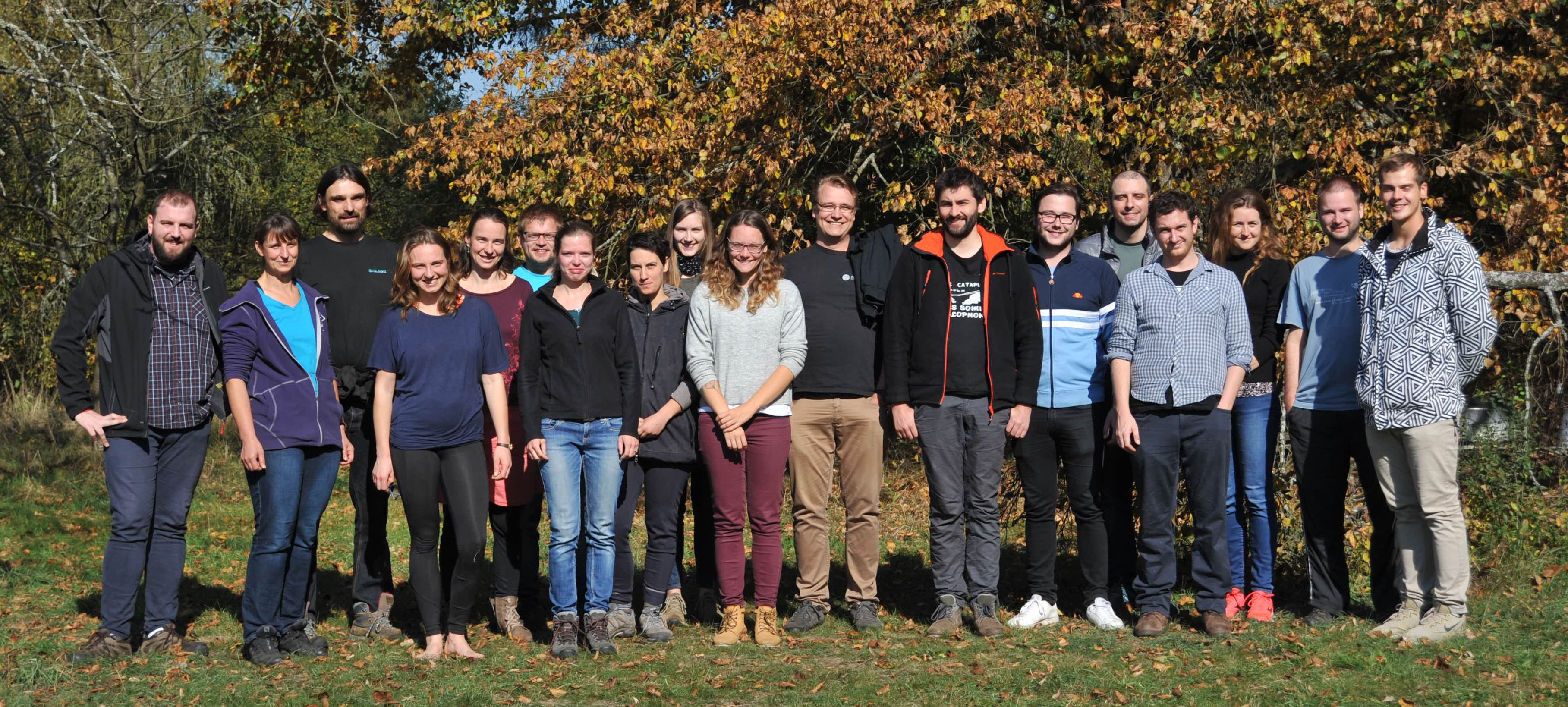
Insect Community Ecology Group, as in the group meeting. © I. Šonský





